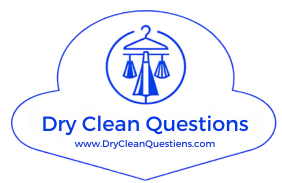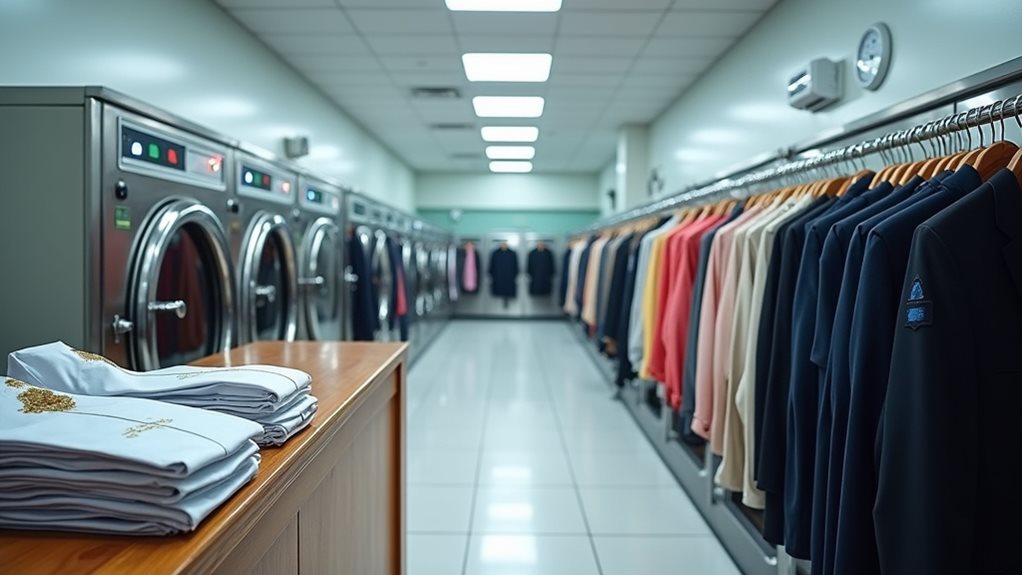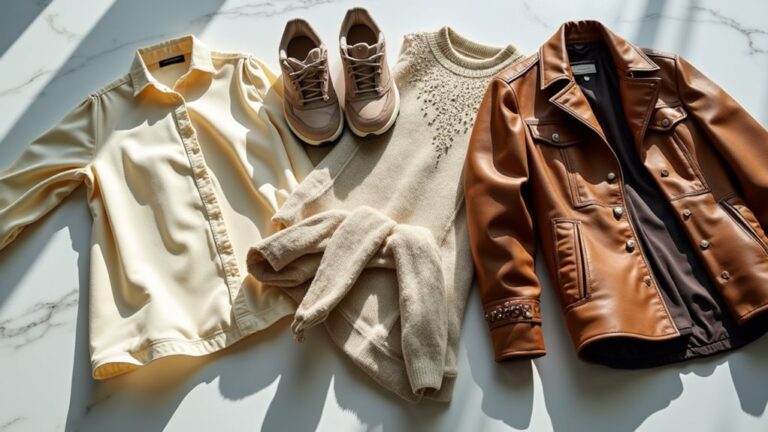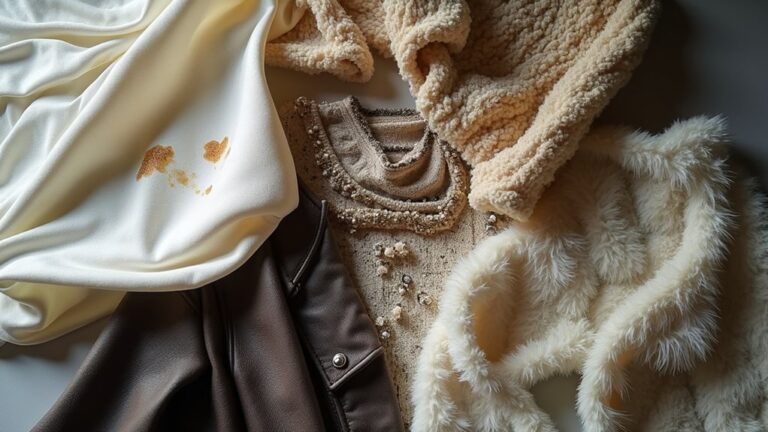When you pick up your dry cleaning, immediately remove those plastic garment bags – they trap moisture and can damage fabrics over time, something I learned the hard way with my favorite silk blouse. Inspect each piece for any remaining stains or damage before leaving the shop, then hang everything on padded hangers in a cool, dry closet with proper spacing to prevent wrinkles and mildew. There’s actually much more to maximizing your dry cleaning investment.
Understanding What Dry Cleaning Is and How It Works
When I first moved out on my own and discovered that mysterious “Dry Clean Only” tag on my favorite blazer, I’ll admit I was completely clueless about what that actually meant – like, how do you clean something without water, right? 😅
Dry cleaning is fundamentally a sophisticated cleaning process that swaps out water for chemical solvents, making it the go-to method for delicate fabrics like silk, wool, and those fancy suits that would probably shrink into doll clothes if you tossed them in your regular washing machine.
The traditional dry cleaning process involves careful inspection of your garments, where professionals check care labels and identify stubborn stains before treating them with specialized solvents that lift dirt without damaging delicate fibers – it’s honestly like magic for maintaining your favorite pieces.
The most commonly used solvent is perchloroethylene, though many modern dry cleaners are switching to more environmentally friendly alternatives that provide the same excellent cleaning results.
Preparing Your Garments Before Drop-Off

Before you head out the door with an armload of delicate garments, taking a few minutes to properly prepare everything will save you from that sinking feeling I experienced when I realized my AirPods had gone through an entire dry cleaning cycle in my coat pocket – and trust me, explaining that mishap to the cleaner was almost as expensive as replacing them! 😬
Start by gathering all your dry-clean-only items in one spot, then methodically go through each pocket, including those sneaky inner compartments in blazers where receipts, lip balm, and random business cards love to hide, because professional cleaners aren’t responsible for items left behind. You’ll want to avoid any awkward conversations about why your jacket now smells faintly of expensive solvent mixed with melted ChapStick.
Next, conduct a thorough inspection of each garment, removing any visible debris or lint that might interfere with the dry cleaning process. During this inspection, also check the care labels on each item to confirm they actually require dry cleaning rather than gentle home washing. Giving your cleaner organized, pocket-free items shows respect for their expertise while protecting your valuables and guaranteeing the best possible results for your investment pieces during drop-off.
Choosing the Right Dry Cleaning Service
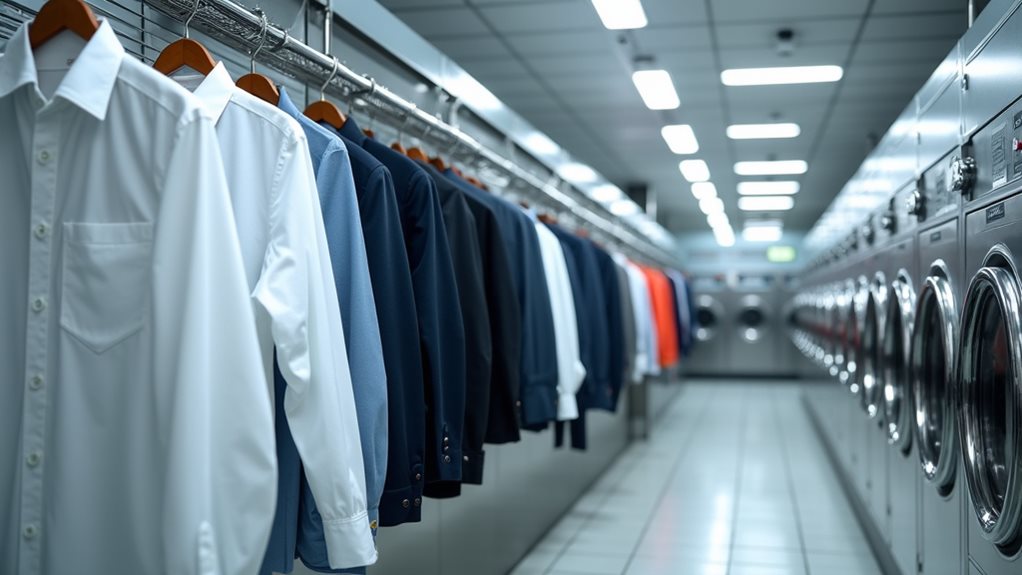
How do you separate the dry cleaning gems from the places that’ll treat your favorite blazer like a dishrag? Start with customer reviews – they’re your best friend when hunting for quality dry cleaners.
Look for shops offering eco-friendly cleaning options, because your clothes and the planet deserve better than harsh chemicals.
Check their pricing structure upfront; nobody likes surprise bills that make your wallet cry 😅.
Ask about their experience with delicate fabrics like silk or wool, and whether they use advanced equipment for superior garment care.
The best places offer extensive stain removal services and convenient pickup and delivery options.
Consider checking if the dry cleaner has proper certifications to ensure they meet industry standards for quality and safety.
The Professional Cleaning Process Explained
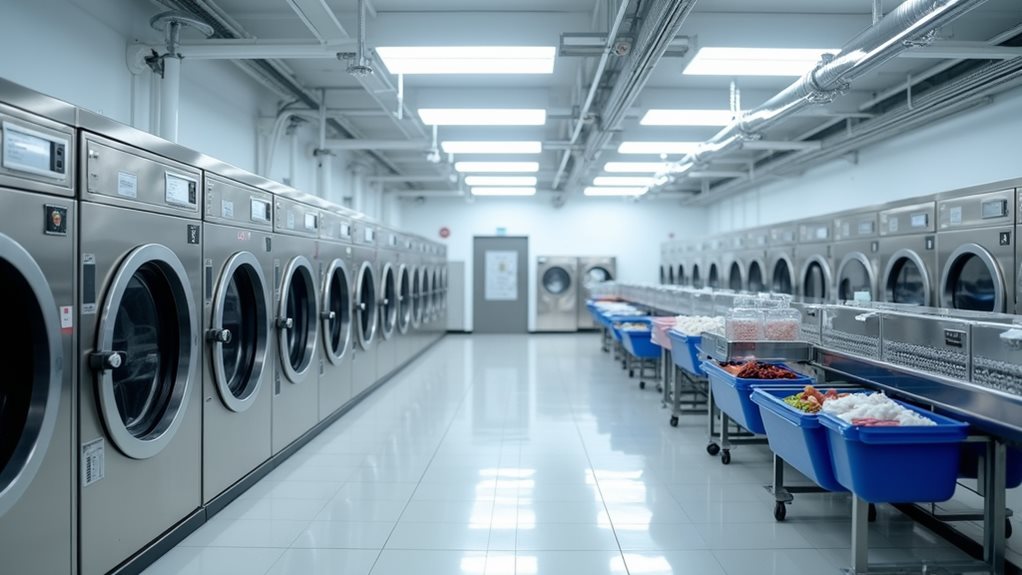
Once you’ve found that perfect dry cleaner who treats your clothes like treasured heirlooms, you might wonder what actually happens behind those mysterious curtains where your favorite pieces disappear for days.
The professional cleaning process starts when your garments receive careful inspection tags, then undergo pre-spotting where skilled technicians apply specialized solvents to stubborn stains.
Next, your clothes take a gentle bath in cleaning machines filled with environmentally friendly solvents that lift dirt without water damage.
After another thorough inspection guarantees every spot vanished, the finishing touches begin with precise pressing and steaming.
The solvent used in the cleaning process is then filtered and distilled for reuse, making the dry cleaning operation more efficient and environmentally conscious.
- Tagging and inspection identify each piece and catalog existing damage
- Pre-spotting treatment targets specific stains with chemical solutions
- Solvent cleaning removes dirt through non-water-based gentle agitation
- Quality control inspection verifies complete stain removal
- Professional finishing eliminates wrinkles through pressing and steaming
Picking Up and Inspecting Your Cleaned Items

When you arrive at the dry cleaner’s counter with that little pink ticket clutched in your hand, you’re probably anxious to grab your clothes and dash out the door—trust me, I’ve been there, especially when I’m running late for dinner plans and just need my favorite blazer back.
However, picking up your cleaned items requires a moment of patience for proper inspection. Check each garment for lingering stains or damages that might’ve occurred during processing, because catching these issues immediately gives you the best shot at resolution.
Examine the finishing quality too—wrinkled shirts or weird solvent odors are red flags worth mentioning. Don’t hesitate to communicate any concerns with the dry cleaning staff; they’d rather fix problems now than deal with unhappy customers later.
If you notice chemical smells from residual solvents like perchloroethylene that weren’t properly removed during the cleaning process, bring this to their attention immediately for re-processing.
Proper Storage and Care After Dry Cleaning

You’ve successfully inspected your garments and everything looks perfect, but your dry cleaning process isn’t quite finished yet—what happens next can make or break how long those freshly cleaned clothes maintain their pristine condition.
I learned this lesson the hard way when I left my favorite silk blouse wrapped in plastic for weeks, only to discover it had developed a musty smell that required another trip to the cleaner 😅.
Here’s how to properly care for your clean fabrics:
Proper fabric care after dry cleaning determines whether your garments stay fresh for weeks or require another expensive cleaning cycle.
- Remove moisture-trapping plastic garment bags immediately to let breathable fabric materials air out naturally
- Use padded hangers for delicate garments, storing them in cool, dry locations with adequate air circulation
- Prevent mildew by avoiding overcrowded closets that restrict airflow between hanging items
- Switch to cotton garment bags for extended storage instead of suffocating plastic alternatives
- Check for damage regularly during storage
- While dry cleaned clothes can get wet without permanent damage, protect them from moisture when possible since water exposure can cause water spots, shrinkage, or color bleeding
